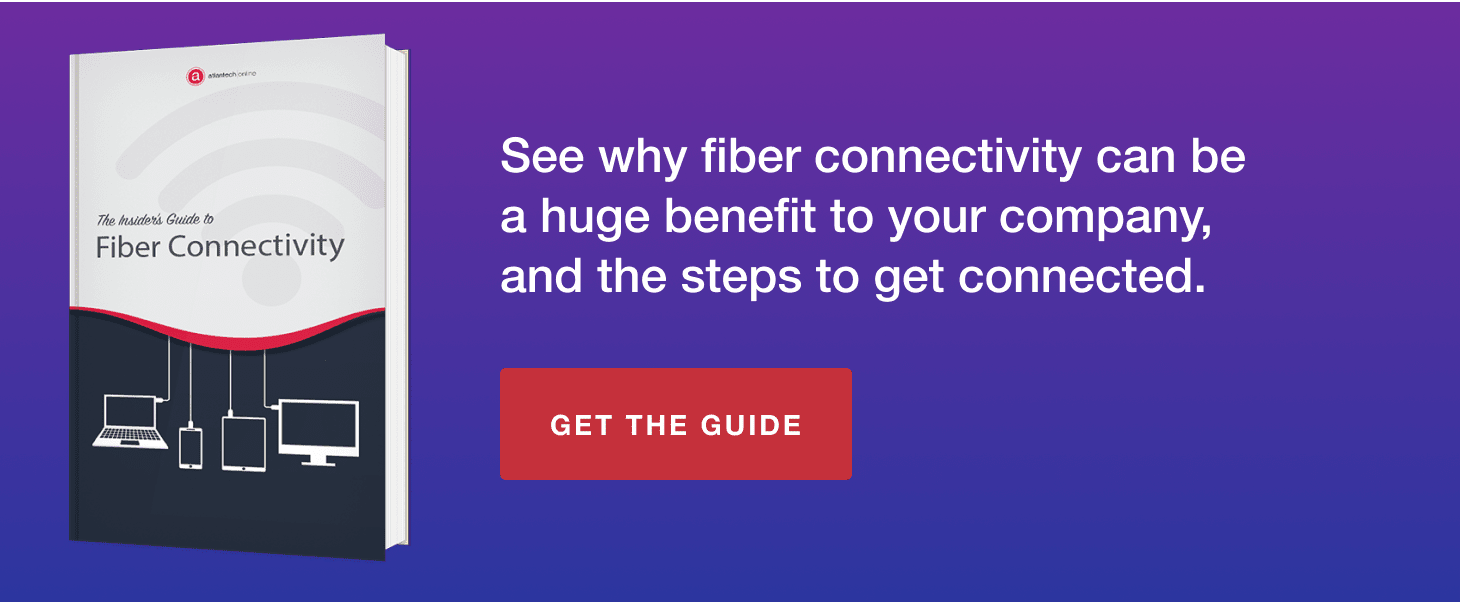Commercial Real Estate Value Based on Location... and Access to Fiber

For decades, commercial real estate has adopted the homeowner mantra of location, location, location. Being on a major thoroughfare or near a university, hospital or government agency has contributed to the success of a commercial building. But in 2022, unless you have a walk-in business that thrives on spontaneous, impulse-driven sales, location is less of a factor in determining real estate value than it once was. This has become even more true as a result of the global pandemic. In an age when everyone walks around with the entire Internet in our pockets, “location, location, location” is quickly being trumped by connection quality when it comes to influencing tenant demand and therefore valuation. Buildings are even rated now based on their WiredScore and that score can impact the value of the property!
For today’s forward-looking business facility landlords, Internet connectivity and access to “The Cloud” is emerging as the key game changer. In fact, fiber connectivity has been found to increase the value of physical real estate by a few percentage points. Additionally, fiber is a fundamental building block to properly managing a building and its physical systems such as HVAC, physical security and even parking.
How Fiber Connectivity Increases the Value of Physical Property
A 2015 white paper by the Fiber to the Home Council Americas goes even further, citing data from the University of Colorado at Boulder. Apparently, not only does a fiber connection add an average of 3.1 percent to a property’s value, but valuations are increased by an additional 1.8 percent when comparing areas with connectivity speeds of 100Mb/s with those that support 1Gb/s or more.
In the age of the cloud-based business, older models of real estate appraisal just don’t apply anymore. What are the logical implications that made “location, location, location” so critical for the past several generations?
For starters, let’s consider how close the physical building is to public transportation, smooth driving, and easy parking. Traditionally, an office that is situated relatively far from major infrastructure and thoroughfares is going to be less attractive to tenants. By extension, if your building, dependent as it surely is on telecommunications at one level or another, has inadequate access to online services, then this too is a type of prerequisite accessibility.
As Harvard Business School Professor Robert Kaplan puts it, access to the Internet over fiber is quickly becoming more important than roads when it comes to property value and infrastructure.
This is hardly just an analogy. The data shows a high correlation between physical real estate and digital real estate. Of course, areas that are technological hubs are more likely to have access to gigabit Internet service. Surely other factors are at play here as well – locales with best-in-class Internet speeds are more likely to be successful economically for any number of reasons. It’s the old chicken and egg conundrum, but the holistic effect is indisputable.
Demand for Fiber Continues to Skyrocket
As today’s business tech specifications become the standard across the country, local governments and community organizations are taking the initiative to work with private enterprises to implement their own fiber solutions and spur investment demand. In areas where not every building has the same speeds as the next, owners can differentiate themselves from the competition by offering direct fiber access. The Brookings Institute has highlighted how the benefits outweigh the costs of broadband expansion, especially in commercial areas.
The logistics involved with getting connected via fiber-optics are surprisingly simple. The fiber themselves are brought into the building and are used to extend the conduits for connectivity that already exist in your building’s area. Alternatively, a new conduit is installed in the telecommunications room where the appropriate circuit lives – and from there, fiber or copper is used to bring the connectivity directly to individual employees’ or tenants’ office suites.
Moreover, when you use a fiber-specializing service provider such as Atlantech Online, you can introduce fiber to your building without worry. Our experienced field service technicians have the skills to handle even the trickiest of feasibility assessments and implementation specifics. In some situations, after fiber has been installed, connecting to physical systems used to monitor or maintain the building are advantageous for the building owner and property management. We have seen in many cases, property owners are surprised by how simple, cheap and straightforward it is to upgrade to fiber.
Installing Fiber Is Easier Than You Think
During the “Dot Com” years, tearing up streets and sidewalks was a common sight. This has led to the common misconception that bringing fiber connectivity to a building is intensive, expensive, disruptive and time-consuming. Over time, and as the practice has matured, this is just not so. And in many cases, we are able to leverage existing conduit and don’t have to do any digging at all.
With other companies, it may be different, but with Atlantech, we do our best to shoulder the majority of the workload for installing fiber. We take care of everything, so our clients don't have to. There may be rare cases where this is an exception, but for the most part, once an install plan is approved, not much more is required from the customer.
Building ownership and property management can rest easy and go about your usual business while your structure’s digital real estate increases in value. That jump in connectivity, and therefore property valuation, should take anywhere from a single day to a few weeks, which is, in the context of your investment life cycle, truly the blink of an eye.
If you would like to talk to us today about what it would take to get fiber installed into your building, contact us. We'll show you why our customer support is valued so highly among all our customers.


